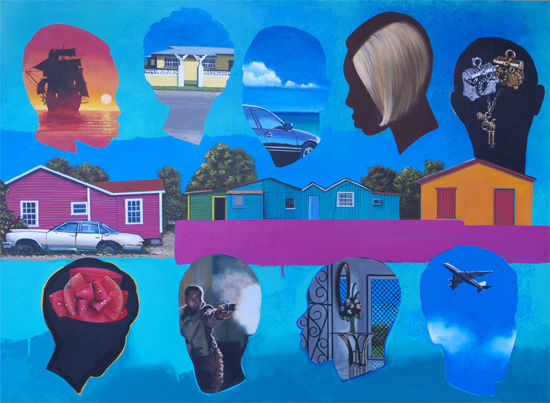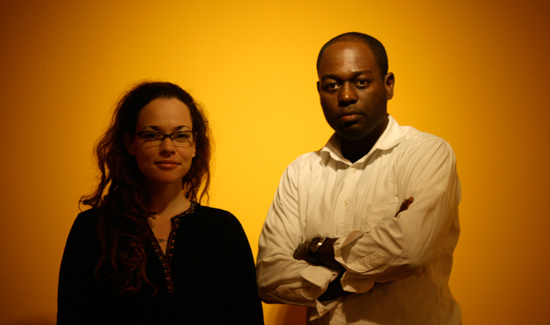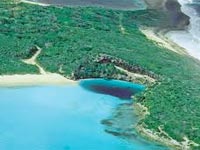Remarks by Patricia Glinton-Meicholas
Written in respect of the 23rd Annual Bahamas Business Outlook
at Melía Nassau Beach Resort
Monday, January 13, 2014
Under the topic “Seeing What You’re Lookin’ at: Development from Inside Out”, the focus of this presentation is Bahamas tourism, economic development and a way to connect them in a manner that can be sustained and benefit a greater number of Bahamians.
Think about the motor vehicles of today. Isn’t it marvelous what the most recent models can do? Many, with an array of computerized functions can be started and a number of their amenities activated remotely. If the television commercials are to be believed, these functions can be performed on a car on the ground by someone sitting on an airplane, which is coming in for a landing. Then there are the prevent-stupidity-models, which will brake automatically when they sense an object in front or back and will even take away the drama of parallel parking.
What do you think would happen if you put into these late-model vehicles the fuel and oil that ran your dad’s old 1950s Pontiac? An evil laugh, a choking sound and you left stranded.
The economies of countries are much the same. As time goes by, what we input to keep them performing at optimum level must evolve to address local needs and international contexts and demands. The case is the same for the economy of The Bahamas.
Furthermore, if we, as a people and as a developing country, are to continue our progress to higher ground, we must aim for a more equitable development throughout our archipelago. Nassau is merely the capital of The Bahamas—it is not The Bahamas. Our economic planning must reflect that understanding. In many ways, development opportunities have lagged in the Family Islands and in various communities of New Providence. If we fail to redress such unbalances, we risk frustrated aspirations and a society in ever-increasing disarray.
In the Bahamian context, when we talk about the economy and development, we cannot avoid talking tourism. For the past 60-plus years of vigorously promoted tourism, the industry has been the vehicle chosen to ferry us to the destination called ‘development’.
The relationship worked fairly well for a long time. Now, I see evidence of a not-so-amicable separation or even a divorce looming on the horizon between tourism’s profitability and its power to effect the further development this country needs and which the underserved segments of the populace are demanding.
Let me be clear. I have a deep appreciation for the revenue tourism has produced for this country and the aspects of our material and social development it has paid for. Unfortunately, the tourism model we continue to employ today is losing ground in the marketplace. Without fundamental change in its underlying philosophy, Bahamas tourism cannot effect the economic and social transformation we so desperately need to provide a more beneficial quality of life for all Bahamians in the 21st century. We need a 21st century brand of fuel for our premier development vehicle to avoid sputtering and infirmity.
Issues in Bahamas Tourism, the Bahamian Economy and the Marketplace
1) Growing Competition and Bahamas Tourism’s Declining Distinction: In the Caribbean region alone, new destinations continue to enter the lists, peddling beach tourism as we do. This factor, coupled with rapid globalization, is leading to a faceless homogenization of island tourism. The majority of the ‘straw’ goods sold in our brand new Nassau Straw Market and those of many competing destinations probably come from the same manufacturers in Asia, the only difference being the necessary changes to the ‘Made in’ tag.
With the world and concomitant local economic downturns, which have been an expected feature of life since the 1980s, competition for scarcer dollars will grow even fiercer. Making progress or just simply holding a place in the race will demand the two “d’s”—diversification and distinction.
2) Limited Bahamian Equity re Ownership, Management and Yield of Tourism: Bahamas tourism is based primarily on foreign direct investment, on foreign branding, on foreign ownership. The major part of the revenue, especially from hotels and casinos, is exported. Bahamian participation in the yield consists mostly of jobs, which are not keeping pace with the demand coming from the 4,000 strong annual exodus from the nation’s schools, or with their aspirations and expectations. We need more of them employing themselves as entrepreneurs, who can set their own productivity gauges.
3) Tourism Design Has Been Posited on a One-sided View of Development at the Highest Level of Policy-making. The development focus is overwhelmingly on its material aspect. We are failing to pay sufficient attention to social development, encompassing notions of identity, equity, social cohesion and democratic participation. If social development continues to be the stepchild of our economic policies and tourism development, it will be to our great cost.
We are already experiencing the backlash in a disturbing surge in violent crime in a population of less than a half million and nearly all of it concentrated on New Providence, where about two thirds of our people are concentrated.
4) A Growing Mismatch between Our Tourism Product and Marketplace Demands: The Bahamas joined the pack-‘em-in gang with a vengeance in the 1990s, bowing to the bullish thrust of the Caribbean cruise industry and resulting in a marked decline in visitor spending per capita. Obviously, we chose the optics of huge numbers over quality.
On New Providence, the hospitality sector, which caters to stopovers, has gone the route of huge, self-contained structures, designed to, and in all practicality, limiting interaction between the visitor and the general populace socially and economically. The merchants who have been admitted within these golden precincts are the same ones who have controlled Bay Street and the largest share of the Bahamian economic pie for centuries.
Furthermore and most important, the people who are most likely to have disposable income, the freedom to travel and to opt for longer stays have experienced many destinations. Their motivation for travel has changed considerably. They are no longer satisfied with being gawking spectators, but are looking for self-actualization. For them the accent is on meaningful participation in the destination culture. It has been noted that the competitive edge will increasingly go to destinations which offer pleasure travel that is more deliberate, more customized, more experiential and more authentically tied to the creative experiences unique to a place.
It is clear that the perspective of Bahamas tourism development has been mostly from ‘outside in’ and not sufficiently grounded in a Bahamian ethos to effect cultural and social uplift for Bahamians. We have hardly explored the riches of our cultural resources as a fount of entrepreneurial opportunities, inclusion, undeniable ownership and as the essential base of our identity as a people. It is equally clear that we must begin urgently to build from ‘inside out’.
How does The Bahamas redress the foregoing imbalances? I propose the adoption of ‘creative tourism’ into the tourism portfolio in a significant way. It is important at the outset to distinguish between cultural tourism and the creative tourism, which is being promoted in this exposition.
Addressing Imbalances: Cultural Tourism and Creative Tourism
Prime Minister Rt Hon. Perry Christie recently announced that The Bahamas would be making a push for cultural tourism this year. It is important to note the major difference between ‘cultural tourism’ and ‘creative tourism’, the latter currently in increasing demand. Cultural tourism dishes a product up and serves it to the tourist. Consequently, the visitor is primarily a spectator taking tours, visiting sites and attending events. Cultural tourism attractions include museums, art galleries, theatres, cinemas, historic sites and monuments, architecture, festivals, exhibitions, performances and other lifestyle and heritage spectacles, etc.
In countries such as ours, cultural tourism tends to be an urban phenomenon primarily. The Family Islands, especially those farthest away from the capital, still struggling for basic physical infrastructure, cannot support the foregoing to any appreciable competitive level. Creative tourism, however, if properly understood and engaged, can allow for greater participation among the islands, more self-reliance and reward for more Bahamians.
Creative tourism is a specialized aspect of cultural tourism, but one where the tourist is immersed in the act of creation. He or she doesn’t want to sit at Arawak Cay and watch vendors perform their amazing knife skills on the conch salad; they want to make conch salad too. The fundamental difference is that creative tourism is travel directed toward active participation in the lifestyle of the people. The creative tourist wants to learn how to do things that reflect the special character of a place. Such visitors travel to vineyards to pick and press wine. They travel abroad to learn to dance indigenous dances and cook as the local people do. Palencia, a city in Northwest Spain invites creative tourists to practice their artistic skills by painting images on local buildings. It must be emphasized that cultural tourism and creative tourism, as defined here, can coexist to great benefit.
Creative Tourism and The Bahamas? A Resounding “Yes”!
The next issue is—Can The Bahamas generate enough creative tourism product to offer a real challenge in the creative tourism marketplace?
We can.
It’s happening at art enterprises such as Hillside House and Popopstudios. It can happen at Sonia Farmer’s Poinciana Paper Press, where a creative tourist could help to preserve arts that are in danger of disappearing—artisan papermaking and letterpress printing. They can learn Bahamian straw weaving patterns and turn the spotlight on them for preservation. They can be taught to paste junkanoo costumes, dance the quadrille or learn dicey doh singing and storytelling Bahamian style. In the Family Islands they can learn crab-catching and preparing a rock oven for baking and actually bake bread in it. They can help to record historic ruins in some form or other. There are so many possibilities.
Potential Benefits of Creative Tourism
Creative tourism can:
- Bring sustainable and profitable development to small communities in the country; Family Islands without significant infrastructure possess any number of traditions and traditional industries, which can secure them a place in creative tourism enterprise.
- Boost the growth of creative industries in The Bahamas generally and thereby increase economic diversification. The cultural industries, which include publishing, music, filmmaking, crafts and design, can play a determinant role in the preservation of valuable aspects of Bahamian history, culture and traditions. This is surely “development from inside out.”
- Put the spotlight on arts, crafts, technologies of the past, which are fading and contribute to their recovery.
- Promote greater economic equity by embracing a wider segment of the population.
- Increase entrepreneurial opportunities for young people and the disadvantaged.
- Generate innovative local solutions for poverty, environmental sustainability and much more.
- Enhance the image and prestige of a multi-faceted destination and reinforce its cultural identity.
Creating a Network to Support the Development of Creative Tourism:
- Growing creative tourism will require the involvement of both the public and private sectors. We must start by working to generate a shared vision among legislators, creative entrepreneurs, city planners, tourism professionals, community leaders, economists, educators, cultural experts, artists and corporate sponsors of creative industries. In this regard, I congratulate Baha Mar for its new art programme and Cable Bahamas Cares Foundation for its many years of committed support of creative industries, including the national stepchild: literature.
- The public sector must create an enabling environment, through tax incentives, research grants and state subsidies.
- Banks and insurance companies must approach funding and coverage of the creative industries from a community-building perspective and be far more supportive of the small entrepreneur than they have been previously.
- The education system must intensify research into our culture and traditions to demonstrate value and pervasiveness, adjust curricula to disseminate findings and assist with entrepreneurial training.
There is a caution.
Process and logistics are all-important to the success of this proposed new tourism venture. We must identify the dots and ensure that we connect them properly. This task cannot be lodged with the public sector. There, it is likely to be hamstrung or retarded by stultifying bureaucracy and red tape. It is therefore the private sector that must take responsibility for recruiting partners, for creating an umbrella organization to cement and keep vibrant the network, articulate the network’s philosophy and themes, identify the tangibles, and jointly seek solutions to shared problems.
It was for this purpose: to bring to the table of creative tourism a leadership and cohesive function, that Creative Nassau was conceived by Jackson and Pamela Burnside of Doongalik Studios about five years ago and supported from the beginning by a cadre of concerned and creative Bahamians. This presentation does not go into details in this regard, because Mrs Burnside took on that aspect at Bahamas Business Outlook 2014, clarifying Creative Nassau’s immediate goal of securing for Nassau the designation of “Creative City of Folk Arts and Craft” in the UNESCO Creative Cities initiative. (Please see Mrs Burnside’s message in this regard as quoted in the Saturday, January 18, 2014 edition of The Nassau Guardian in an article written by Erica Wells.)
It is essential that we hasten to repair the breaches in the wall of Bahamian social development and I believe that providing the avenue for more Bahamians to participate more equitably in the economy of their homeland can begin the process and sustain it. It is through improved social development that we will restore social order. I think we can go a long way to accomplishing this objective by promoting increased cultural tourism, with the specialized subsection called “Creative Tourism” in the forefront. A more orderly and accelerated development of the creative industries is essential to both.



